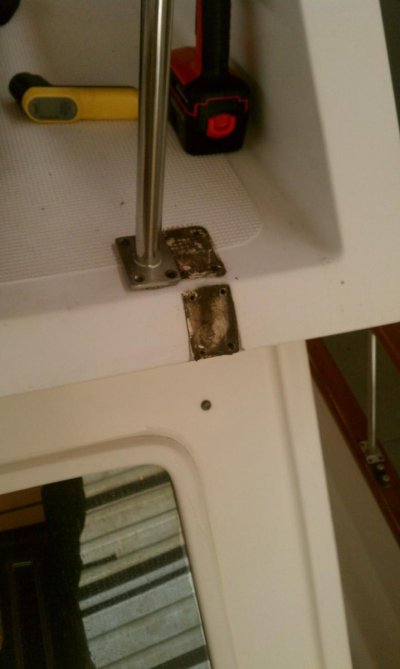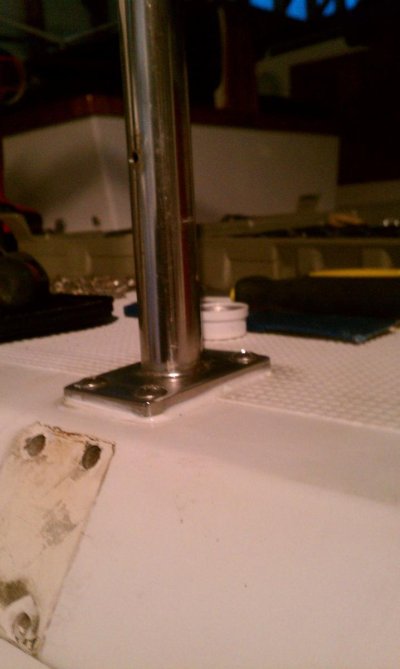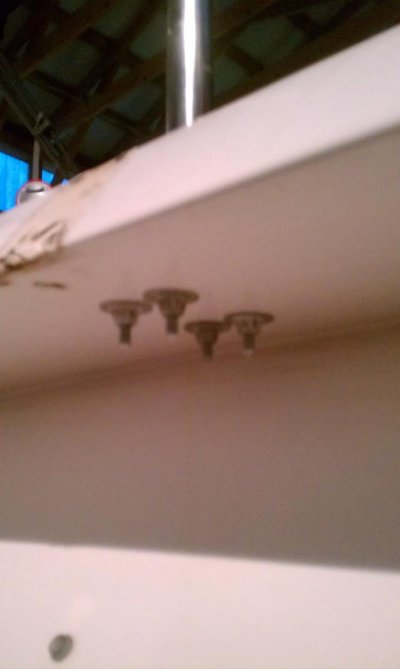I've used git rot and it works fine for soaking into the core, but you will still need expoxy to fill the holes. Having seen the pics and based on my experience, I would stick to my previous comments. Basically, over drill the holes slightly (but make sure you don't go so large that the repair won't be covered by the fitting). Insert some neat epoxy (I like West Systems, but lots of other options out there for less money). Suck that out, then fill with thickened epoxy. Since the repair is on an angle, you will need to thicken it up a bit more than I usually would. A great thickener is fumed silica like cab-o-sil (that is just one brand name). I'd also suggest putting duct tape over the bottom 2/3 of the hole before inserting the epoxy to help prevent it flowing out. The hardest part is getting just the right consistency - enough flow to insert with a syringe, but not so thin that it flows right back out. As soon as it is filled, cover the rest of the hole with tape until it hardens. If you don't think you will have a need for extra epoxy resin, hardener and thickener, then you could try West Systems Six10 product. It comes in smaller syringes and mixes as it comes out of the tube. I haven't used it, but it got good reviews from several dockmates with smaller projects like yours. If you want to get real fancy, you could try to insert a threaded bolt that is covered with wax in the hole before inserting the epoxy - the wax allows you to unscrew the bolt after the epoxy sets. This gives you a very strong threaded insert to screw into, much stronger than self tapping screws. Otherwise, just drill one size smaller than the self tapping screw and you are done. Still recomend butyl rubber for sealing. Good luck - as fiberglass repairs go, this one looks pretty simple.





